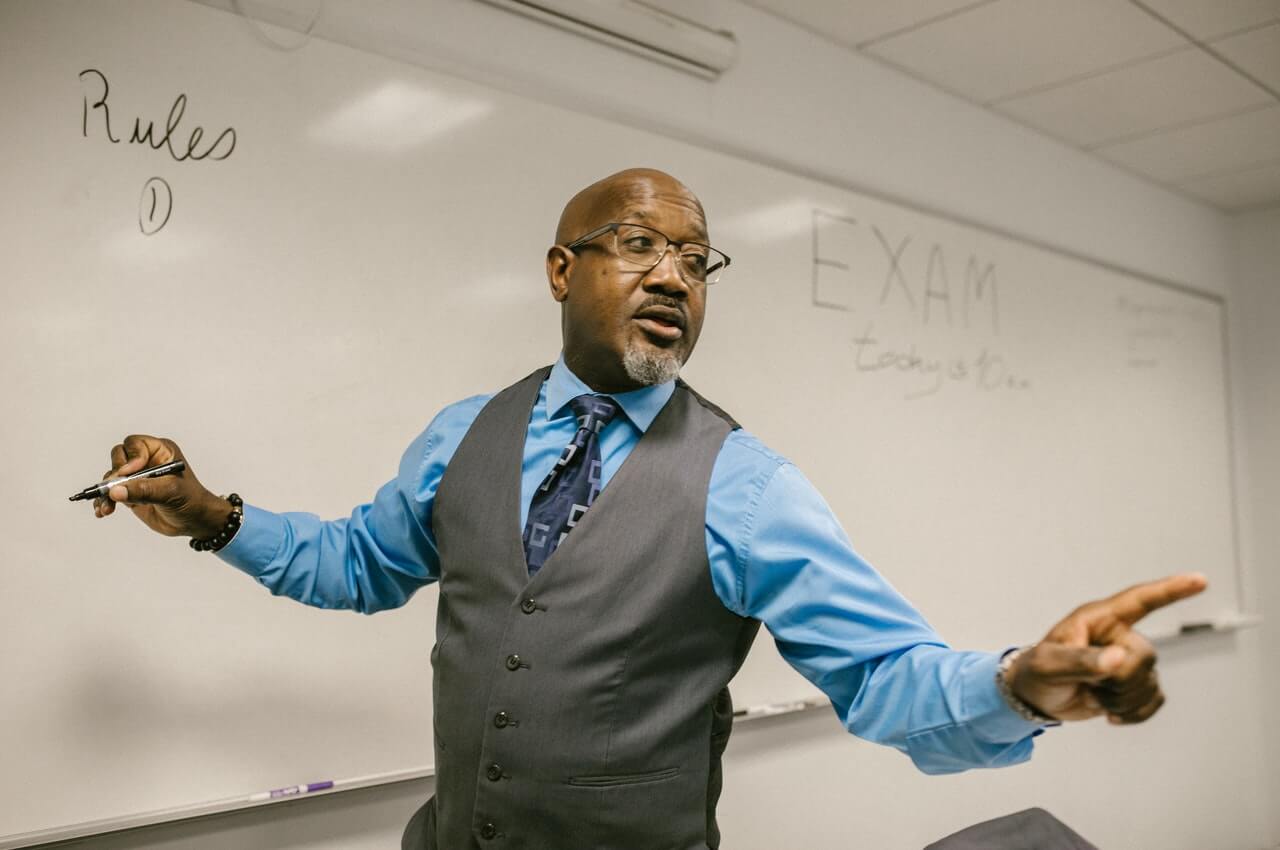
It is assumed that once we have delivered the information to our students and trainees that they are ready to put them to use. Are students and trainees learning what we want them to and applying that learning when they should? The answer is a resounding, “No!”
I was astounded a few years ago when I taught at the United States Air Force Academy at a seminar on learning that students and trainees don’t really apply the information we convey–no matter how important or life saving it is–for about two years hence. That’s how long experts say it takes for the information to sink in.
I thought it was an interesting fact at the time, but as a trainer and a professor of students in an intense environment now where performance is everything I find I am more concerned. Call it a maturity issue on my part earlier, if you will, but at the time I was more concerned that some instructors at the Academy and other fine institutions thought the study seemed to exclude them.
Quite the contrary, it was exactly the institutions that have a rigid framework found not only in a training environment, but in exclusive private schools, fundamentally religious-based institutions, or any institution or environment that prides itself on imparting values and character. That includes all the service academies, Ivy league and other prestigious institutions, regardless of academic prowess. That is not to say these insitutions do not offer a fantastic, even superior learning experiences. The question is not really academic, but behavioral.

Somehow the less prestigious, less rigid, less fundamental schools did not see the same significance in the study. Their students, in fact, were more practically bent and ready to work. Who could know? But let’s learn from it.
Of course, there are always exceptions, and it may be more important in one field where knowledge is more important than practical application. However, when flying jets split-second decisions must be made on practical application of what is learned and lives are at stake. That’s different. Not all practical application comes to that, but when a company needs someone to apply practical application on its behalf it’s important; it is certainly better than having someone sitting at a desk for two years until it dawns on them what is expected of them–or not. It does not work either.
I don’t have the details of the exact study and I apologize for that, but I can assure it was quite valid and backed up by evidence. It was a long time ago and I don’t think things have changed that much. We certainly aren’t seeing the results in rising productivity levels.

Granted, this is a blog–not an expose of teaching and higher education, but the information is worth pondering about for a solution. Maybe that is reason enough to incorporate practical application and real life scenarios into our training and learning environments. We do that now. Are we doing it enough? Do we monitor education and training throughout the first two years of a job? Not often. It cost too much. Internships help. Especially with a wise interpreter to take student to be the employee the company wants them to be.
Of course, an easier solution would be to wait two years to hire anyone from the those kinds of institutions. I can hear the groans from here. I’m not serious. We can’t do that.
This study, surprisingly enough, did not say this was the case with institutions of lesser prestige, or those that seemed more practically based–filling the education and training void for the immediate workplace. That kind of institution does attract a different kind of student–one looking to change his or her life for the better. a practical view of education and training. On the downside, it is their very background that makes them less productive or dedicated students; however, those that do well seemed to succeed at work. And, education for education sake has its place; I won’t deny it.
Ask yourself why that experience might be different for the students or trainees. We know that it is a maturity issue and can assume a relative carefree attitude of student life can contribute to not having the foresight needed for future success. All students have issues, rich or poor, so we can eliminate that factor; however, focus directed in the right direction matters. Priorities, too. I’m not suggesting students shouldn’t have priorities elsewhere besides leading toward success, but those will be the ones first in line. It’s not a perfect theory.
Yes sir, that education or that training is the ticket. All of my USAF academy students would be engineers and most pilots–some flying fighters and some going into the space program–and a few going on to graduate school to be scientists, lawyers and doctors. They are guaranteed jobs. That senior year is a little lax to say the least.

I was one of the working students all through my undergraduate education at a less than prestigious institution; however, the Air Force paid my way for most of my graduate work. I was paid a salary and the service paid for books and tuition. I found myself, for the first time in my life without survival issues while going to school.
I was essentially in the same situation as students who can pick their schools, have enough money to socialize and enjoy the campus environment, and the result: my grades were better before when I worked full time, lost sleep and social playtime. Perhaps, for me it was a matter of my focus. For others, having that opportunity meant a relief from the stress of having to worry about survival, and the result entirely different. My point is that it makes a difference always, and it is behavioral in nature. The human factor.
However, my concern and yours should be those that are just graduating and going directly into a job. At the time I was teaching at the Academy some students were put on hold in the Reserves, giving them time to process what they learned and apply. Is it critical in today’s society? Probably in some cases, but I suspect the numbers are so small, they are chalked up to training accidents, misfits, personal issues, or some other reason for failure to use what they learned in school.
Understand that I am not singling out the the U.S. Air Force or any other service school, or any other Ivy league or well-known private school. Any service school, and prestigious private and/or any Ivy league school practically guarantee placement through name alone and alums willing to sponsor. That, of course, is part of the appeal. Not to mention the fact having staff and personnel from those schools makes a company look good.

What can we do as trainers and developers? We start doing our job from the hiring process. Maybe even a little before, if we can insinuate our presence into the schools to let them know how a transition to work will take place. Gone should be the quick and dirty introduction, and you start next week. Or, “Here’s your guide,” another employee with time on his hands. Or, “It’s all online, you’ll get it.” Or, as happened to me once, “Here’s your Bible (not a religious reference), your how-to-do the job. Show me what you can do.”
We can’t not care because we can let go those who don’t perform. We stand the risk of losing some potentially valuable employees because they can’t help where they come from. Interns should learn from the best we have. If there ever is a time for working mentors–mentors that lead and teach as we need them to; the time is now. They say you learn best by teaching. Why not bring new employees into training to train others? It’s a wild perspective, I know. But we learn best when we train others what is expected. That interaction can’t be bad.
Well, I guess I awoke on that side of the bed today as I contemplate getting into hybrid teaching–a new job myself and my learning was a long time ago. Fortunately, I have applied that learning since, and consider I am always learning. Some of it will be new. The technology and technique didn’t exist then. That will be new. Exciting, I hope. My goal will be to teach the practical. How to use what we learn and why it is important. Hopefully, I will succeed.
For now, let’s blog about learning and its immediate practical application, talk about it, live it as part of how we train. It may be the Cave Man in me again, looking toward simple changes in the way we operate. I follow the trends of technology as much as the next guy but I think about the non-technical side of us all the time–the people we train and teach. Technology is a tool–a good tool. Paper is a tool. Humans are not.
—
For more resources about training, see the Training library.
Enough for now. For a look at the human side of training from my Cave Man perspective, please check out my book, The Cave Man Guide to Training and Development. I don’t have all the answers, but I try to put them in different terms like everyone else. Hopefully, my ideas are worth thinking about, jog your memory, make you think of something else we can do to do our jobs better. By all means, feel free to disagree and let me know about it. Offer yourself as guest blogger. I don’t have the lock on ideas. My website is still there where more ideas await the curious–waiting for you. Happy training.















































